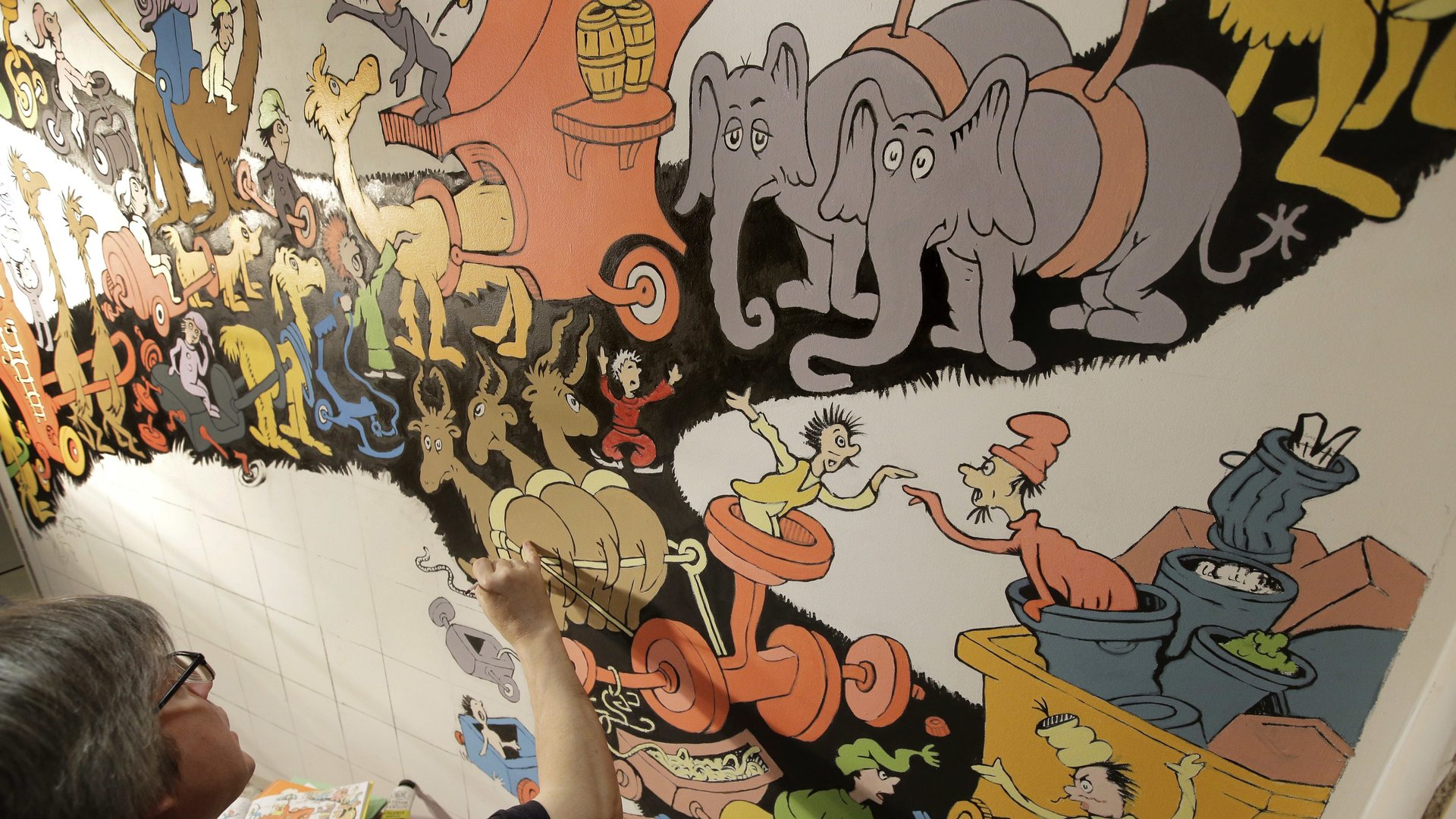The progressive argument for reading Dr. Seuss books to kids
Parents and educators at an elementary school in Cambridge, Massachusetts are split over a divisive issue: Should kids be learning how to hop on pop?


Parents and educators at an elementary school in Cambridge, Massachusetts are split over a divisive issue: Should kids be learning how to hop on pop?
On Sept. 1, to usher in back-to-school season, US first lady Melania Trump sent a selection of 10 Dr. Seuss books to one school in each state. This week, Liz Phipps Soeiro, a librarian at Cambridgeport School, a public elementary school, responded with a letter published at The Horn Book, saying she wouldn’t accept the books. Soeiro called Dr. Seuss cliché and racist. She suggested Trump be more imaginative in her selection, and included an alternate list of 10 picture books for kids.
Soeiro has a point, no doubt. Trump’s staff could not have been lazier in choosing obvious American mega-classics, and students could benefit from more copies of lesser known titles about non-white kids. But in pitting Seuss against social justice, Soeiro misses one of the fundamental reasons his rhyme-saturated books have endured, and why we should keep reading them to kids.
Soeiro’s is a specific kind of list, for a specific kind of ultra-woke parent. It includes Auntie Yang’s Great Soybean Picnic, by Ginnie Lo with illustrations by Beth Lo; Drum Dream Girl, by Margarita Engle with illustrations by Rafael López; and Separate Is Never Equal, by Duncan Tonatiuh. These are parents who, in Soeiro’s words, want their kids to be aware from a very young age of “the beautiful resilience of children who stand up to racism and oppression and for social justice and reform” and “children who are trying to connect with parents who are incarcerated simply because of their immigration status.” Of the 10 books she suggests, nine are about human characters with brown skin who live in the real world and for the most part have non-white-European names.
But picture books have an advantage that grownup books don’t—the ease with which they paint a world of abstract unreality, letting children become shapes or animals with place-agnostic names, protagonists too experimental or highbrow for adults. (To wit: the tenth book on Soeiro’s list is about a crayon.)
These kinds of stories, where the protagonist is a feather or a blue circle or a fish, allow children to see themselves in any story. A daughter of refugees doesn’t have to imagine life as a white, British boarding-school wizard or a whiny, white American preteen; she can just fade into life as a little bear who likes to listen to stars. Through characters that are without country, gender, or race, picture books can achieve a universality that doesn’t depend on righting oppression-specific wrongs.
That’s not to say kids shouldn’t read the books on Soeiro’s list, heavy-handed as it may be. Drum Dream Girl, based on the childhood of Chinese-African-Cuban drummer Millo Castro Zaldarriaga, is beautiful, and My Cold Plum Lemon Pie Bluesy Mood, with its free-verse, musical color-moods, is a delight. There’s much to be gained, for parents and kids both, from stories that aren’t from a single narrative. But while kids can and should use books to meet people who don’t share their looks or culture, kids should also read books with characters who don’t look like anyone, or, indeed, any thing.
Theodor Seuss Geisel, the man behind the hat-wearing cat, was not a utopian floating in a genderless, race-less dream. He drew anti-Japanese cartoons during World War II, and critics, including Soeiro, say his characters are inspired by blackface and minstrel tropes. And it is hard to ignore, for example, the caricatures of If I Ran the Zoo, “helpers who wear their eyes at a slant,” or the black humanoids who resemble monkeys on the fictional African island Yerka. When Dr. Seuss’s books get close to the real world, they actually do disturb. But the long list of potential places to eat green eggs and ham, the high silliness of things that rhyme with sam, the Zeds who need to get haircuts every day—those parts endure.
There is room on the shelf for more than one kind of diversity—not only the books that instruct on the real world, or on racism and oppression, but also those that subtly instill inclusivity through lack of identity. That’s a fluidity that many of Dr. Seuss’s books, for all their own absurdities, give to readers.